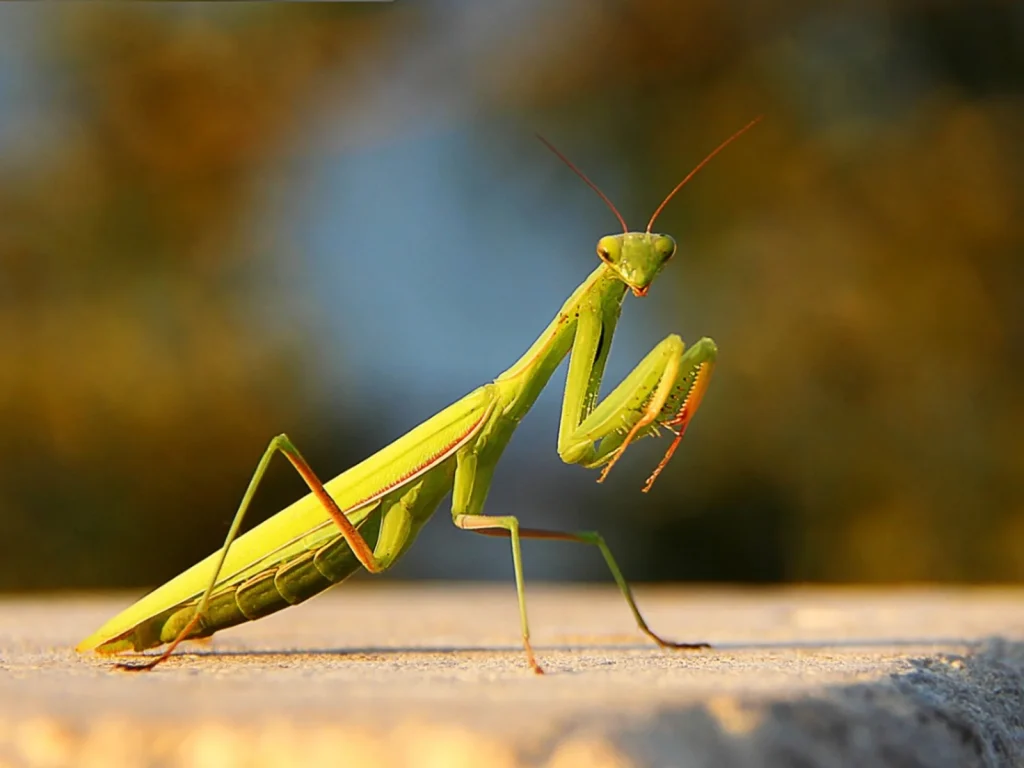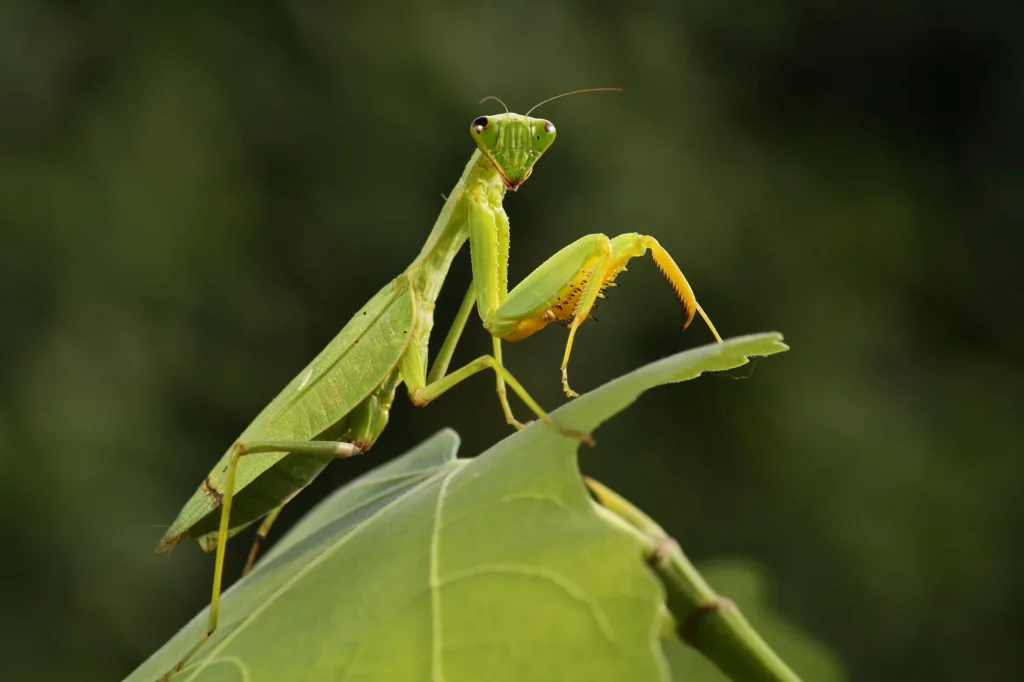How Much Can a Praying Mantis Lift? In the animal kingdom, feats of strength and power often come from the most unexpected sources. Among these hidden champions is the praying mantis, a small and unassuming insect that possesses extraordinary lifting capabilities. By combining its compact size with an exoskeleton for internal muscle attachment, the praying mantis defies conventional expectations and showcases its unique strength. Let’s delve into the fascinating world of these miniature weightlifters and understand the science behind their remarkable abilities.

How much weight can a praying mantis lift?
To comprehend the praying mantis’ exceptional strength, we first encounter the infamous square cube law, a fundamental principle in biology and physics. This law states that when an animal’s dimensions double, its weight increases by a factor of eight, while its strength only grows by a factor of four. The opposite is also true: halving the dimensions results in a quarter of the former strength, but the animal becomes twice as strong per unit weight. This phenomenon provides a remarkable advantage for the small-statured mantis, as it enables the insect to be far stronger relative to its size compared to larger terrestrial arthropods.
Leveraging Leverage
At the heart of the praying mantis’ strength lies the concept of leverage. The insect’s internal muscles, known as Striated muscles, are strategically attached to specific parts of its exoskeleton. This unique arrangement allows the mantis to deliver maximum force with minimal energy expenditure. The result is a deadly combination of power and precision, enabling the mantis to wield its impaling spikes on its forelimbs with remarkable efficiency. As a result, it can easily capture and secure its prey, sealing the deal on what will soon become its next meal.
The Preying Mantis vs. Human Strength
While the absolute strength of a praying mantis is minuscule compared to that of a human, its strength-to-weight ratio is truly remarkable. The mantis may appear weak in comparison, but its ability to generate force is vastly superior concerning its body weight. Moreover, its respiratory system is tailored to accommodate the oxygen demands of smaller insects, allowing it to function efficiently despite its diminutive size. The praying mantis beautifully demonstrates how nature optimizes different designs to suit each organism’s specific needs.

Implications for Survival and Hunting
The praying mantis’ extraordinary strength plays a pivotal role in its survival and hunting strategies. Its ability to lift and immobilize prey much larger than itself gives it a significant advantage in capturing sustenance. The mantis combines its muscular prowess with exceptional patience and stealth to become a true ambush predator. The insect’s energy conservation mechanisms allow it to maintain its predatory pursuits for extended periods, further ensuring its success in the wild.
Conclusion
The praying mantis, a humble insect, embodies the wonders of nature’s design and adaptation. By skillfully capitalizing on the square cube law and leveraging its internal muscle attachment, this miniature weightlifter defies expectations and emerges as a formidable force in the animal kingdom. As we continue to uncover nature’s marvels, the praying mantis remains a shining example of strength, efficiency, and survival prowess in the world of arthropods.